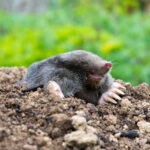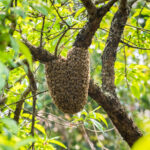Outdoor Living Without Pests: 10 Pest Prevention Tips for Outdoors
Outdoor Living Without Pests: 10 Pest Prevention Tips for Outdoors
When it comes to enjoying your time outdoors, dealing with pests can quickly dampen things. Imagine being able to relax in your garden or host a barbecue without the constant buzz or scurrying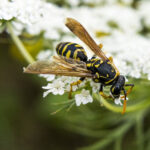
What are the most common pests found outdoors?
You may encounter a variety of common pests outdoors, including rats and mice, wasps, bees, hornets, moles, squirrels, and voles. These pests can disrupt your outdoor living experience and potentially pose health hazards. Understanding their habits and behaviours can help you implement effective pest control strategies to keep your outdoor space pest-free.
Rats and Mice
Rats and mice pose significant dangers to outdoor living spaces, as they are a nuisance and potential health hazards. These pests can carry diseases such as hantavirus, leptospirosis, and salmonella, which is transmitted to humans through droppings, urine, and bites. Their gnawing habits can damage property, chew through electrical wires, and compromise the structural integrity of buildings. Additionally, rodents can contaminate food supplies, leading to costly waste and health risks, making rodent prevention an essential step.
Wasps, Bees and Hornets
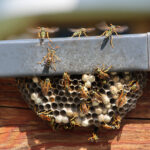
Not only can their stings be painful, but they can also trigger severe allergic reactions in some individuals, necessitating immediate medical attention.
Moles
One of the most common pests in your outdoor living environment can cause significant damage: the mole. Mole tunnels can ruin your lawn, creating unsightly hills. Effective mole control strategies, such as using mole repellent, must be implemented to address this issue. Keep your outdoor space free from these destructive pests with targeted measures.
Squirrels
Moles aren’t the only critters that can disrupt your outdoor living space. Squirrels, often seen as charming little animals, can actually cause significant damage. They’re notorious for gnawing on wooden structures, which can weaken decks, fences, and even the eaves of your home. Additionally, their tendency to dig in gardens can uproot plants and create unsightly holes.
But the issue doesn’t stop at outdoor damage. Squirrels can also find their way into attics and crawl spaces, attracted by warmth and shelter. Once inside, they chew on electrical wires, insulation, and even wooden beams, posing a fire hazard and leading to costly repairs.
Voles
Voles are one of the most common pests found outdoors, and they are small rodents that wreak havoc on your garden and lawn. Voles are attracted to overgrown vegetation and tall grasses, making your outdoor living space vulnerable to their destructive habits.
To deter voles, keep your lawn and gardens well-maintained, minimising their hiding spots. Additionally, consider using natural deterrents such as castor oil or planting vole-resistant plants like daffodils and hyacinths.
Slugs
To maintain a pest-free outdoor living space, it’s crucial to be aware of common threats like slugs. Slugs are molluscs that thrive in damp environments. They’re attracted to standing water and can damage plants.
To control slug populations, beneficial insects like predatory ground beetles should be introduced. Additionally, avoid overwatering plants and use physical barriers like copper tape to deter slugs from entering your outdoor space during activities.
Mosquitoes
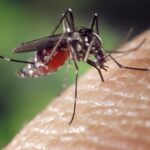
Birds
Encountered in various outdoor settings, birds can sometimes become a nuisance due to their nesting habits and droppings. To keep these common pests at bay, consider outdoor pest control methods.
Birds can pose health risks through their droppings, which may carry diseases. Limit their food sources, such as open garbage or bird feeders, to deter them from frequenting your outdoor spaces.
Damage and harm caused by outdoor pests
Outdoor pests can cause extensive damage to property and pose significant health risks. Rodents like rats and mice are notorious for gnawing on structures and damaging wood, electrical wires, and insulation, which leads to costly repairs and even create fire hazards. In gardens, pests like moles and voles can ruin landscaping by destroying plant roots and creating unsightly holes, while squirrels may chew on wooden structures and dig up plants.
Stinging insects, including wasps, bees, and hornets, not only disrupt outdoor enjoyment but can also cause painful stings and potentially life-threatening allergic reactions in some individuals.
Beyond structural damage, outdoor pests pose numerous health risks. Rodents spread diseases such as hantavirus and leptospirosis through droppings and urine. Mosquitoes, often found breeding in stagnant water, are vectors for diseases like West Nile virus and dengue fever. Bird droppings can also carry pathogens that may affect both human and pet health. To minimise these health hazards, it’s essential to implement effective pest control measures, maintain cleanliness, and eliminate potential nesting and breeding sites.
What draws pests to your outdoor area
Pests are often drawn to homes by the enticing scents of food and decaying organic matter, which can create an inviting environment for various unwanted visitors. Common attractants include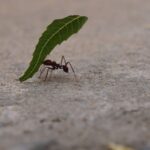
These elements not only provide nourishment but also offer shelter for pests, making your outdoor area a prime target for infestations. Additionally, overripe fruits in gardens, garbage bins that aren’t properly sealed, and compost piles can further entice pests, leading to a cycle of attraction that can be difficult to break.
Ten tips for a pest-free outdoors
To keep pests away from your outdoor space, implement as many of these tips below as you can:
Install Pest-Proof Fencing
To create a pest-free outdoor living space, install tightly sealed pest-proof fencing and keep trash cans away from the property perimeter. Use materials like gravel or mulch to deter ant infestations, and regularly inspect and maintain the fencing for effectiveness.
Remove Standing Water
One crucial step in maintaining a pest-free outdoor environment is removing standing water. Pests like mosquitoes breed in stagnant water, so you should ensure containers are emptied regularly, fix leaky faucets, and improve yard drainage to prevent water accumulation.
Seal Gaps in Your Home’s Exterior
Inspecting and sealing gaps in your home’s exterior is critical in creating a pest-free outdoor living environment. Check for openings around windows, doors, pipes, and utility lines. Seal any gaps with weather-resistant sealant, steel wool, wire mesh or caulk to prevent pests from entering your home.
Keep Trash Secure
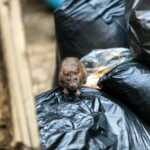
Maintain Your Lawn
Attention to lawn maintenance is vital to maintaining a pest-free outdoor living space. Mow your lawn frequently to maintain the recommended height for your type of grass.
Properly water the lawn, keeping it hydrated without overwatering. Remove debris and thatch buildup, as these can attract pests. A well-maintained lawn creates an environment that discourages pests from making themselves at home.
Properly Store Firewood
Properly storing firewood is crucial for maintaining a pest-free outdoor living environment. Store firewood off the ground and away from structures to prevent pests from infesting your outdoor space.
Keep firewood dry and well-ventilated to deter insects seeking shelter. Regularly inspect firewood for signs of pests and promptly remove any infested pieces to prevent the spread of insects in your outdoor area.
Use Pest-Repellent Plants
Enhance your outdoor living space’s defence against pests by strategically incorporating pest-repellent plants. Plants like lavender, marigolds, and citronella emit scents that deter mosquitoes, flies, and other insects.
Due to their strong fragrances, mint, basil, and rosemary repel ants, beetles, and flies. These plants not only add beauty to your garden but also act as natural pest control, creating a more enjoyable outdoor environment.
Trim branches along with regular garden cleanups.
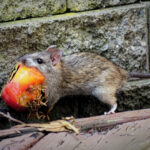
Alongside garden cleanups, which must be done often, pruning branches helps reduce hiding spots and nesting areas, making your outdoor area less appealing to pests seeking shelter and food sources.
Install Outdoor Lighting Strategically
Strategic outdoor lighting is crucial for a pest-free outdoor living space. Use yellow or sodium vapour lights instead of mercury vapour lights to reduce the attraction to insects.
Place lights away from entrances to prevent pests from being drawn inside. Consider motion sensor lights to deter nocturnal pests. Ensure lights are positioned at heights that don’t create dark spots where pests can hide.
Use Mulch Carefully
When aiming to cultivate a pest-free outdoor environment, the careful use of mulch plays a significant role in your landscaping practices. Mulch can provide hiding spots and breeding grounds for pests.
To prevent this, maintain a distance of at least 12 inches between the mulch and your home’s foundation. Regularly inspect the mulch for signs of pests and replace it if needed to keep your outdoor space pest-free.
Natural Pest Repellents for Outdoor Spaces
Natural repellents can be a great solution for keeping pests away from outdoor spaces. These are the five most effective methods that are known to show some results:
Plants that repel pests
Harnessing the power of nature’s own defences and incorporating plants that repel pests can be a strategic and effective way to maintain a pest-free outdoor living environment.
Plants like lavender, marigolds, and citronella grass naturally deter pests such as mosquitoes, flies, and ants.
These plants emit scents that repel insects, keeping your outdoor space pleasant and bug-free without the need for harmful chemicals.
Essential oils
Utilising essential oils as natural pest repellents in outdoor living spaces can be highly effective and eco-friendly to deter unwanted insects. Oils like citronella, lavender, peppermint, and eucalyptus contain compounds that insects find repulsive. Dilute these oils in water and spray them around your patio, garden, or seating area to create a barrier that keeps pests at bay.
Citrus peels
Citrus peels are a natural and effective method for repelling pests in your outdoor living spaces. The strong scent of citrus, particularly from peels of oranges, lemons, or grapefruits, acts as a deterrent against insects like mosquitoes and ants. Scatter citrus peels in areas where pests are problematic, such as near entry points or outdoor seating areas, to help keep them at bay naturally.
Vinegar solutions
Consider using vinegar solutions as effective pest repellents to naturally deter pests in your outdoor living spaces. Vinegar’s strong scent masks the odours that attract pests, making it an excellent natural deterrent.
Mix equal parts water and vinegar in a spray bottle and apply it around entry points, plants, and outdoor seating areas. Reapply the solution after rain to maintain its effectiveness in keeping pests away.
Diatomaceous earth
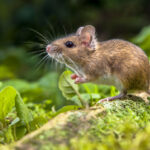
This natural substance is effective against various pests, such as ants, bedbugs, and fleas, making it a versatile and eco-friendly pest control option for outdoor areas.
In conclusion, implement these practices and methods to create an outdoor living space free from pests. Remember that pest control is an ongoing process, and regular maintenance and prevention are key to maintaining a pest-free environment.
Frequently Asked Questions
What Should I Do if I Encounter a Pest Infestation in My Outdoor Space?
- If you encounter a pest infestation in your outdoor space, identify the pest species to determine the most effective control method. Implement targeted pest management strategies such as sanitation, exclusion, and habitat modification. If needed, seek professional pest control assistance.
Can Outdoor Pests Transmit Diseases to Humans or Pets?
- Yes, outdoor pests can transmit diseases to humans or pets through bites, faeces, or contaminated surfaces. It’s essential to create a pest-free outdoor space to prevent the spread of diseases and protect your health and that of your pets.
Are Natural Pest Repellents Safe for Humans and Pets?
- Natural pest repellents such as plants, essential oils, citrus peels, vinegar solutions, and diatomaceous earth are generally safe for humans and pets. However, it’s always best to take precautions when using any substance around children or animals. If in doubt, consult with a professional before use.
How Often Should I Implement These Practices to Maintain a Pest-Free Outdoor Space?
- Regular maintenance is crucial in maintaining a pest-free outdoor space. You should implement these practices at least once a month and do regular inspections to identify and address any potential pest issues. Adjust the frequency as needed based on your specific outdoor environment and pest pressures.
Trust in our professionals at Youngs Pest Control
Pest prevention is important, but when the situation gets out of control, speak to one of our friendly staff on 0161 776 9834 or contact us at [email protected].

